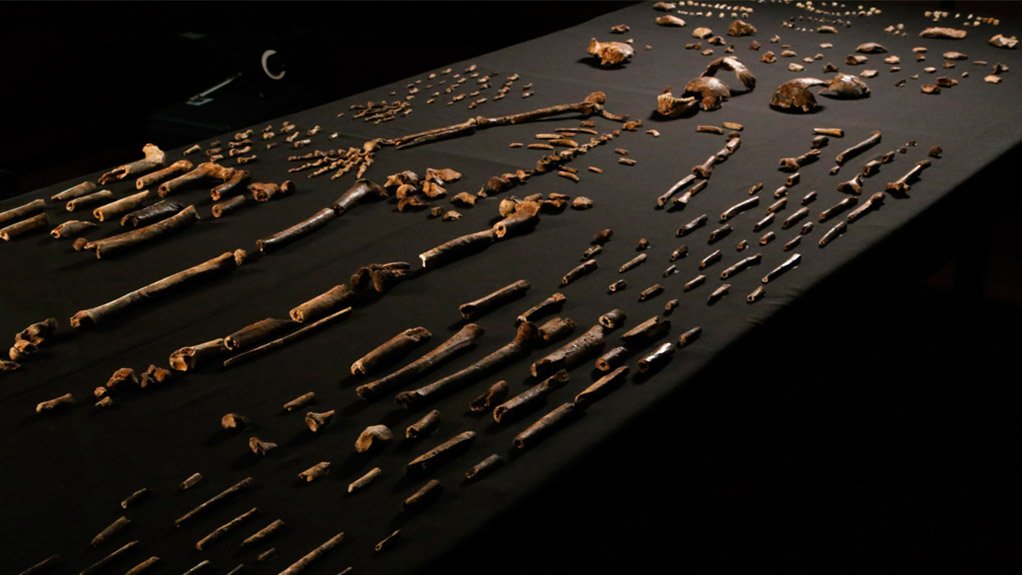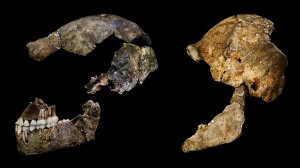Homo Naledi – a link in our understanding of evolution
It is a discovery that is shedding new light on the origins of humankind. One unlike anything scientists have encountered in any other Hominin species and a discovery forcing scientists to rethink the origins of our genus. It is, perhaps even, the missing link in our story of evolution.
And its name, is Homo Naledi, a brand new species jointly announced on Thursday by the University of the Witwatersrand (Wits), the National Geographic Society (NGS), the South African Department of Science and Technology (DTS), and the National Research Foundation (NRF).
In 2013, two cavers – Rick Hunter and Steven Tucker – were investigating a narrow fracture system at a cave in Maropeng in Gauteng, South Africa, when they came across the entrance to the Dinaledi Chamber, the “Chamber of Secrets”.
It was there, in the cradle of humankind, that they made the discovery of Homo Naledi (H. naledi), ultimately altering existing understanding of evolution.
Having discovered the fossils and with pictures as proof, Hunter and Tucker contacted another caver and a geologist Pedro Boshoff who, having recognised the significance of the find, contacted Lee Berger, research professor in the Evolutionary Studies Institute at Wits.
After further investigations, Berger – also a National Geographic (NatGeo) Explorer-in-Residence and leader of the consequent expeditions – reached out to the NGS for assistance to dig deeper into who or what the yet unnamed H. naledi was.
“This is a tremendously significant find,” said Terry Garcia, the NGS’ chief science and exploration officer. “This is why, when we received a call from Lee Berger reporting the fossils’ initial discovery, we immediately committed our support to this remarkable effort.”
The effort, which began in November 2013, would span almost two years before knowledge of H. naledi became public.
Throughout, the team were supported and funded by the partners Wits, the NGS, the DTS, the NRF as well as the Gauteng Provincial Government and Gauteng Tourism Authority, The Cradle of Humankind World Heritage Site and Maropeng and James Cook University. Continuation of the research would be supported by the Lyda Hill Foundation.
The expeditions became known as the Rising Star expeditions and the team grew. Part of the growth included putting a call out on social media for experienced scientists who could fit through the 18-centimetre-wide cave opening.
The search yielded six women from around the world who became known in the team as “underground astronauts”.
Able to access the cave, the team discovered more than 1,550 numbered fossil elements, representing at least 15 individuals.
It is the single largest fossil hominin find yet made on the African continent.
“If we learned anything about a completely new form of hominin only because a couple of cavers were skinny enough to fit through a crack in a well-explored South African cave, we really don’t have a clue what else might be out there,” said NatGeo executive editor for science Jamie Shreeve.
Further challenging what scientists believed they knew about human origins and the human genus was the location of the find and the anatomy of H. naledi.
“What’s important for people to understand is that the remains were found practically alone in this remote chamber in the absence of any other major fossil animals,” said Dr Paul Dirks of the James Cook University in Queensland, Australia and the author of a paper contexualising the find.
In the chamber, which had always been isolated from the others in the cave, located approximately 90 metres away from the entrance were the remains of individuals representing a range of ages and both male and female.
It appeared to scientists that H. naledi had intentionally buried their dead in this remote chamber, a contrasting view to what they previously believed about the evolution of human behaviour.
“We explored every alternative scenario, including mass death, an unknown carnivore, water transport from another location, or accidental death in a death trap, among others,” said Berger.
“In examining every other option, we were left with intentional body disposal by Homo naledi as the most plausible scenario.”
This, the possibility of a form of ritualised, repeated behaviour, was one believed to be unique to us, the human species.
With a mix of primitive features as well as enough human-like ones to warrant placing it in the genus Homo, H. naledi’s physical structure also represents a challenge to existing theories and human lineage.
The unusual combination of features was unlike anything scientists had seen in any other early hominin species.
Similarities to australopiths such as Lucy, Mrs Ples, and the Taung Child, is H. naledi’s small brain, the size of an average orange.
Illustrating its belonging to the genus Homo is, among others, the shape of H. naledi’s skull with its distinct brow ridges, the narrowing of the cranium behind the orbits, and a “gracile set of jaws with small teeth”.
It also has feet much more like human feet than those of a chimpanzee although they are flatter and the toes are slightly more curved.
Its strongly curved fingers illustrates the H. naledi regularly climbed. It was thus, a climbing, upright, bi-ped, singling major implications for debates in human evolution.
Identifying that the science fraternity had missed some key transitional forms in the fossil record, the team will now be testing the possibility that H. naledi is rooted in the initial origin and diversification of the genus Homo.
The impact of the H.naledi discovery and the consequent challenges to existing theories could have implications for the development of the African archaeological record, interpreting the South African archaeological record, and questioning the creators of the stone tools.
And the team does not believe the discoveries will end anytime soon.
“There are potentially hundreds if not thousands of remains of H. naledi still down there,” said Berger.
“This chamber has not given up all of its secrets”.
Comments
Press Office
Announcements
What's On
Subscribe to improve your user experience...
Option 1 (equivalent of R125 a month):
Receive a weekly copy of Creamer Media's Engineering News & Mining Weekly magazine
(print copy for those in South Africa and e-magazine for those outside of South Africa)
Receive daily email newsletters
Access to full search results
Access archive of magazine back copies
Access to Projects in Progress
Access to ONE Research Report of your choice in PDF format
Option 2 (equivalent of R375 a month):
All benefits from Option 1
PLUS
Access to Creamer Media's Research Channel Africa for ALL Research Reports, in PDF format, on various industrial and mining sectors
including Electricity; Water; Energy Transition; Hydrogen; Roads, Rail and Ports; Coal; Gold; Platinum; Battery Metals; etc.
Already a subscriber?
Forgotten your password?
Receive weekly copy of Creamer Media's Engineering News & Mining Weekly magazine (print copy for those in South Africa and e-magazine for those outside of South Africa)
➕
Recieve daily email newsletters
➕
Access to full search results
➕
Access archive of magazine back copies
➕
Access to Projects in Progress
➕
Access to ONE Research Report of your choice in PDF format
RESEARCH CHANNEL AFRICA
R4500 (equivalent of R375 a month)
SUBSCRIBEAll benefits from Option 1
➕
Access to Creamer Media's Research Channel Africa for ALL Research Reports on various industrial and mining sectors, in PDF format, including on:
Electricity
➕
Water
➕
Energy Transition
➕
Hydrogen
➕
Roads, Rail and Ports
➕
Coal
➕
Gold
➕
Platinum
➕
Battery Metals
➕
etc.
Receive all benefits from Option 1 or Option 2 delivered to numerous people at your company
➕
Multiple User names and Passwords for simultaneous log-ins
➕
Intranet integration access to all in your organisation























